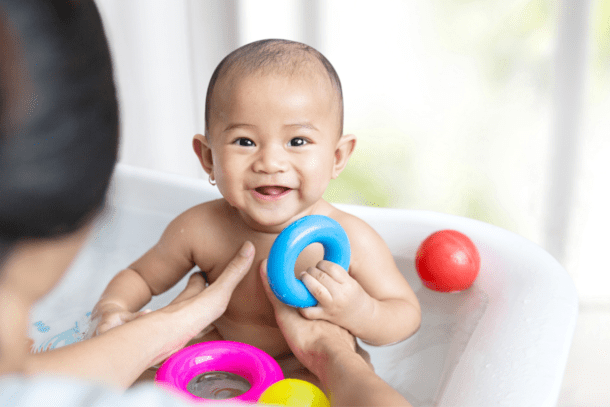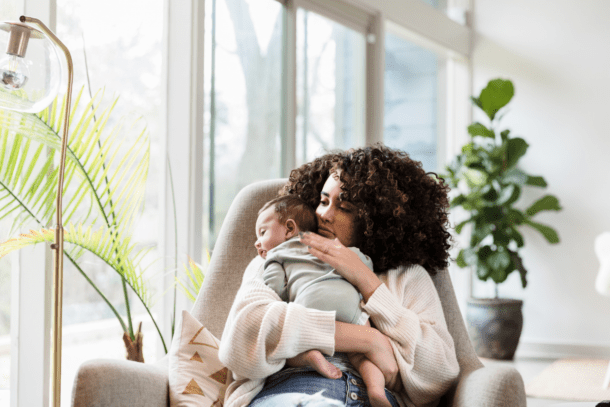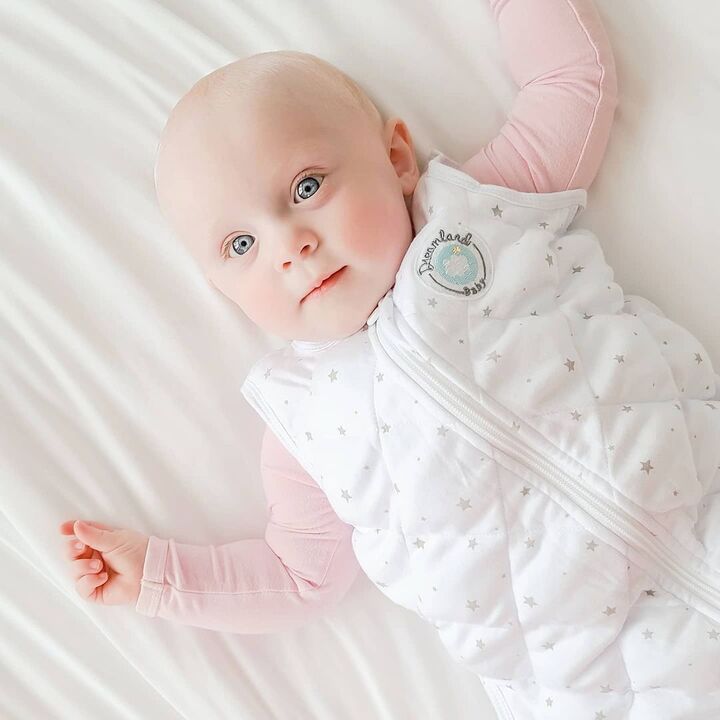Why Sleep Sacks Promote Better Sleep
As a certified pediatric sleep consultant, my number one focus with families is to promote safe sleep with their baby. Are weighted swaddles and sleep sacks safe for babies and toddlers? Are sleep sacks necessary? Why do I recommend using them?
I absolutely recommend swaddles and sleep sacks, especially for babies under 12 months. Using swaddles and sleep sacks promote safe sleep and overall better sleep for babies and toddlers. But why?
Safe Sleep Recommendations
The AAP recommends following safe sleep guidelines, especially under 6 months to reduce the risk of SIDS (Sudden Infant Death Syndrome). Babies should be laid on their back for every sleep (until they are able to roll both ways) on a firm sleep surface. The sleep space should be clear of any soft objects, pillow and loose blankets or bedding. This is to prevent an obstructed airway and ultimately suffocation or entrapment.
Blankets aren’t recommended until 12 months, in order to follow safe sleep guidelines. A sleep sack is the perfect solution to keep baby warm all night long without having to use loose blankets. Swaddles are recommended under 3 months to prevent the Moro reflex (startle reflex) which can wake up baby. It also helps your newborn feel snug like when they were in the womb.

My Favorite Brand
My favorite swaddle and sleep sack brand is hands down Dreamland Baby Co. The Dreamland Baby Co. swaddle and sleep sacks are designed to help your baby feel calm and fall asleep faster. The gently weighted swaddle and sleep sack naturally reduces stress and increases relaxation to help them stay asleep longer. The weight is less than 10% of baby’s body weight and does not restrict movement.
This product is designed with mom in mind. The reverse zipper makes diaper changes a breeze. There’s no need to take off the sleep sack completely especially in the middle of the night. The material is 100% soft, natural cotton and safe for machine washing.
Dreamland Baby Co. has a product for every age and stage of sleep. Their weighted swaddle has an inner swaddle band which you can discontinue once baby starts rolling. The top part of the swaddle has snaps to keep their arms in or out once you need to have their arms free.
The sleep sacks range from 0-36 months so you can continue to size up as your baby grows into toddlerhood. Some toddlers are ready to come out of the sleep sack. Dreamland Baby Co. also has something for ages 3 and up. Their weighted blanket is the perfect product to keep your toddler warm and snug all night long. My toddler loves hers!
What is a Sleep Prop?
You may be thinking, does this sleep sack or blanket become something my baby can’t sleep without? Isn’t that a bad sleep association? My mission is to help families work on helping baby fall asleep independently, free of any sleep props or sleep associations, so trust me I understand. A sleep prop is anything that helps your baby fall asleep that they can’t replicate on their own.
While this doesn’t sound like a bad thing, if it’s the only way your baby can fall asleep, they need this same intervention each time they wake throughout the night. Some examples of sleep props include breastfeeding, bottles, pacifiers, patting, rocking, or even laying with mom or dad. With these things, your baby needs you to repeat those same strategies each time they wake up.
However, there are also positive sleep associations. There are items you can introduce that help your child know that bedtime is coming which helps soothe and calm them before sleep. Swaddles, sleep sacks and lovey’s are all positive sleep associations. Your baby doesn’t need your intervention with these items, and it helps give them consistency in their sleep routines.

Bedtime Routines
Bedtime Routines are important to implement at an early age. A step-by-step consistent bedtime routine helps cue your baby’s body and brain that it’s time for sleep. Keep the routine 30-45 minutes at most, the extra time would be to make sure baby takes a full feeding but stays awake.
Bath time is a great first step and is a helpful transition from daytime to nighttime. Some babies don’t love bath time so if needed you can do a wipe down to start instead of a full bath every night. Once baby is in their jammies and diaper offer a full feeding and keep them awake.
Reading a book is a great way to break up the feeding before you lay them down for sleep. Reading to your baby or toddler helps their language develop and also aids in early brain development. When your read to your child and use facial expressions, it helps with their emotional learning. If you haven’t added this to your bedtime routine, it’s never too late to start!
Getting them in their swaddle or sleep sack is an important part of the bedtime routine. Again, this is that transition time, they’re getting ready for sleep. Cue the Dreamland Baby Co. swaddle or sleep sack! The gently weighted sack will help soothe and calm your baby so they can relax and drift off to sleep. Once baby is calm and cozy, get those snuggles and kisses in and lay baby down for sleep.

Independent Sleep
That all sounds so easy right? My baby will just happily drift off to sleep. This may not be the case with every baby. If you work on setting the stage for independent sleep early on, your baby will be able to settle quickly for naps and bedtime. If your baby needs a lot of intervention from you (rocking, patting or feedings) to fall asleep then a bedtime routine won’t magically make them an independent sleeper.
A bedtime routine and a swaddle or sleep sack will absolutely improve your child’s sleep by bringing consistency and comfort. But if you find that your baby struggles to settle on their own and you can’t lay them down awake, working on independent sleep along with implementing these other strategies will ultimately improve their sleep and help them sleep longer stretches at night.
Not sure where to start? Following awake windows during the day and implementing a bedtime routine at night is a great first step! Work on keeping your baby awake during feeding times and follow a WAKE-EAT-PLAY-SLEEP schedule. For more sleep tips and advice, follow me on Instagram or visit my blog! I also offer free sleep solution calls.

